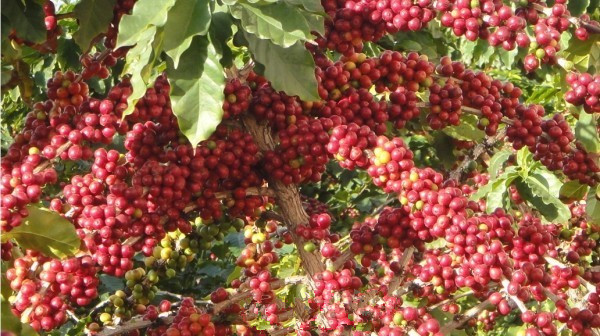Harvesting and processing of coffee
Coffee trees take 3 to 5 years to bear fruit. They first produce small white flowers that resemble jasmine in shape and size. After withering, they produce dark green coffee fruit, then turn yellow, red, and crimson when fully mature. Coffee beans as we know them are seeds sandwiched in crimson coffee fruit.

Coffee harvesting:
As the coffee fruits are really ripe at different times, they are mainly picked manually, and they are picked from the trees one by one.
Coffee processing:
Coffee fruits need to be processed immediately after picking. There are two processing methods, one is dry: spread on the ground for about 12 to 15 days, direct exposure, after drying, take off the pulp, remove the bean shell. The nuts taken by this method are incomplete and taste poor. when it rains, there will be miscellaneous flavor due to fermentation, but the cost is low. The other is water washing: it takes only 20 to 24 hours to soak the pulp with water, remove the bean shell and dry it to become a clean green bean kernel, clean and free of miscellaneous smell, fresh and mellow taste, short time required, complete beans and less bad beans, but the cost is higher. After the fresh coffee beans are dried, they are still wrapped in a parchment-like shell, and the coffee beans stored in this form are called "Parchment Coffee" (parchment coffee beans). Remove the parchment overcoat from the coffee beans before export, and then polish and grade them before listing.
The variety of coffee
Coffee fruit (coffee beans) is mainly divided into three kinds of original beans: Arabica (Arabica), Robusta (Roberta) and Liberica (Librika). The origin of Arabica coffee is Ethiopia, which accounts for 70% to 80% of the world's coffee production, and almost all the world's famous coffee varieties are Arabica. Roberta coffee originates in Congo, Africa, and accounts for about 20% to 30% of the world's production. But its flavor is bitterer than Arabica, its quality is much lower, and its caffeine content is higher, so it is mostly used to make instant coffee. Liberica coffee, which is produced in Liberia in Africa, accounts for less than 5% of the world's production, and this coffee bean has a very strong aroma and bitter taste.
Important Notice :
前街咖啡 FrontStreet Coffee has moved to new addredd:
FrontStreet Coffee Address: 315,Donghua East Road,GuangZhou
Tel:020 38364473
- Prev

How to tell if it is freshly ground coffee
1. When you go to the place where you buy coffee, you will smell the aroma of coffee before you see it. This is how the aroma of coffee spreads easily. If it is an old coffee bean, the oil contained in the coffee will go bad instead of giving off a fragrance, so the aroma is a symbol of the quality of the coffee. The fresher the coffee, the better it tastes. If you want to enjoy delicious coffee, you must first buy it correctly and skillfully.
- Next

Plant coffee trees correctly
One of the characteristics of a coffee tree is that its fruit can bear fruit several times a year, and another is that flowers and fruits coexist at different stages of ripening.
Related
- What is the meaning of lactic acid fermentation with coffee bean treatment?
- How to judge the state of foam by sound?
- How does the latte pull out the unicorn pattern? Come to get for a little trick to improve the flower pull!
- Will flower pulling affect the taste of the latte?
- Do you know the history of coffee?
- The difference between honey treatment and sun washing what is raisin honey treatment?
- What kind of milk can a novice use to make coffee foam to keep the foam longer? The correct method and skills of milking tutorial sharing
- Why do washed coffee beans taste sour? Flavor characteristics of washed Coffee
- Introduction to the skill of how to practice the size and height of water injection around the circle of hand-brewed coffee
- How do beginners practice coffee flower drawing from scratch?

